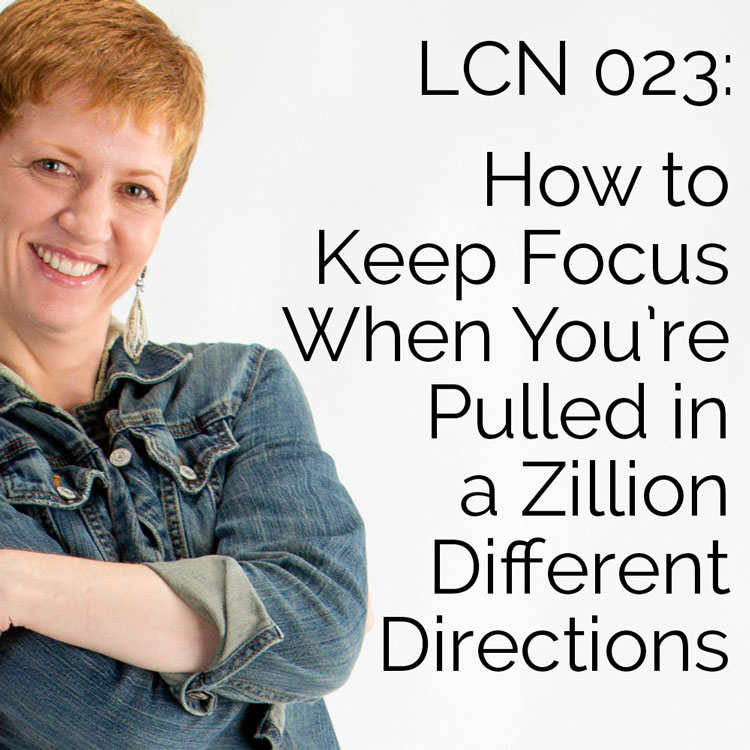
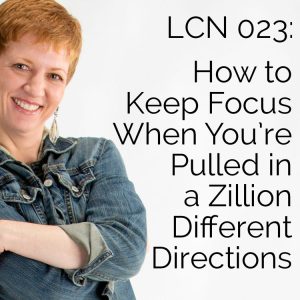 Claudia shared on a recent live Q&A call that she finds it hard to keep focus. In this episode, I share a whole passel of tips and techniques that have worked for me to elegantly juggle a plethora of interests and goals, and how I determine how to focus my energies.
Claudia shared on a recent live Q&A call that she finds it hard to keep focus. In this episode, I share a whole passel of tips and techniques that have worked for me to elegantly juggle a plethora of interests and goals, and how I determine how to focus my energies.
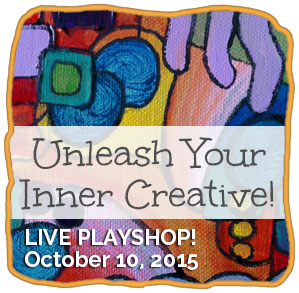 Reminder: On Saturday, October 10, I’ll be in New Jersey, and there are two opportunities to play with me:
Reminder: On Saturday, October 10, I’ll be in New Jersey, and there are two opportunities to play with me:
1) I’m teaching a half-day Unleash Your Inner Creative Playshop. Click here to read all about it and grab a spot.
2) I’m performing at a house concert that same evening — me and my ukulele, and my looper. You’ll find a link to the ticket page here.
Here is a brief summary of some of the tips I shared with Claudia in this episode.
Spend time processing
Freewriting in my journal, ideally every morning as part of my morning ritual, helps me to hone in on what I want to focus on — for the day, for the week, and beyond.
Have a place to capture what you’ve processed
I’m a big fan of Evernote, an app that acts as a limitless, digital file cabinet for capturing ideas and goals that I may never find again in my paper journal.
Prioritize, prioritize, prioritize
Oh, how we hate prioritizing! But figuring out what is most important to you, for now, is absolutely essentially.
One thing that helps me with this is having a big “Chief Initiative” goal for the next six months to a year. When I have a larger goal, it acts as a sort of organizing principle to help me decide what to tackle next.
3 is a magic number
It helps me to focus on no more than 3 big goals at any one time. My brain can hold onto three goals; more than that becomes overwhelming very quickly.
Think modularly
Some people are very happy scheduling their day to the minute. That doesn’t work so well for me. Instead I think of scheduling more modularly.
For example, I know I can focus on writing for about 90 minutes to two hours at a time. So I might plan to write for 3 hours over the course of three days, but how I spread those hours and minutes can vary.
Get to know your energy levels throughout the day
I’ve learned that I get really sleepy and low-energy from about 2:00 to 4:00pm, so this is a lousy time to try to do my most intense, creative work/
Get to know your circadian rhythms
Ever since I hit, oh, maybe my mid-30s, my body has begged me to get to bed earlier. Only recently have I finally honored my body’s needs. Life goes better when I work with my natural circadian rhythms, rather than against them.
Have a morning ritual
Whether your morning starts at 5:00am or noon, starting the day with a rhythm locks in a pattern of focus and productivity. If you start your day by checking email, then you are setting the tone of your day at distraction. A morning ritual acts as a funnel to channel you toward doing what you want to get done.
Experiment with adding more structure to your day and week
I haven’t found my sweet spot yet, but I’m finding that the more I ritualize my tasks, giving certain things a particular time, a particular day, and/or a particular order in the scheme of all the tasks I’m doing, the better my life goes and the more productive I am.
For example, my podcast goes out every Wednesday morning. Right now, Monday and Tuesday are the days when I create and schedule the podcast episodes.
(Ideally, this may move to Thursday or Friday the week before, to allow more cushion, but for now, it’s Monday and Tuesday.)
Batch like tasks
One of the things I’m working on right now is scheduling certain similar tasks at specific windows during the week. For example, I have a lot of calls — group calls for the programs I run, client calls, podcast interviews. It would be easy to pepper calls all over my weekly calendar, but
Make sacred space and time for your creative work
I’ve learned that one of my peak creative times is in the morning. I’ve also learned that I don’t have to make myself available to the world 24/7!
Nope, I get to draw the line. So I started experimenting years ago with keeping my mornings as sacred creating time.
It took me a long time to give myself full permission to do this, but it has been hugely life-changing.
Create ways to build accountability into your life
When I want to get something done, one of the most powerful tools in my toolbox is to create some external accountability. I’ve learned that I am not my best accountability partner! I know I’m not alone in this, either.
When I wanted to finally clutterbust my studio, I created the Great ClutterBust, largely because I knew I’d never do it without external accountability!
Why is it so hard?
Oh, sweetheart, you are not alone! I resisted routine (and many of the tips I just shared here) for 40-some-odd years!
The other thing to keep in mind is that when you’re ready, you’re ready. When you’re not ready, you’re not ready.
What this means is that even if you integrate something into your life and it feels really good, it doesn’t mean that it is going to stick. Take my Great Bedtime Experiment.
For the month of January, 2012, I committed publicly to getting to bed every night by 11:00pm, lights out. And it worked! (Accountability is powerful!)
But it took three and a half more years before an early bedtime routine actually stuck.
This is why I always say that the most important practice is just getting back on the wagon! (Click to tweet!)
The “What the Hell” Effect
Human beings stumble in our goals and commitments all the time.
And guess what happens when we have a goal to avoid something (cigarettes, junk food, etc.), and we stumble?
We beat ourselves up, and in an attempt to seek comfort we too often turn to the very thing we’re trying to avoid. For example, you blow your diet, then binge like a maniac. This is the “What the Hell” Effect (and yes, that is an actual scientific term!)
In this episode I share a famous study, often referred to as the Donut Study, which demonstrates that self-compassion prevents people from sliding into the “What the Hell” Effect.
More on self-compassion and achieving goals
I also share another study in which people with a fitness goal were divided into two groups. One group was trained in self-compassion, and the other was not. Both groups stumbled, didn’t make it to the gym when they’d planned, etc., but the self-compassion group was much more successful at achieving their goals in the long run.
Self-compassion, according to Kristin Neff, the world’s foremost self-compassion expert and author of Self-Compassion, is composed of three parts:
- Mindfulness
- An awareness of common humanity
- Self-kindness
Resources Mentioned in this Episode
The Donut Study, which showed that self-compassion is a powerful antidote to the “What the Hell” Effect.
Thanks for Listening!
Thanks so much for joining me this week. Have some feedback you’d like to share? Leave a note in the comment section below!
If you enjoyed this episode, please share it using the social media buttons you see at the bottom of the post.
Also, please leave an honest review for Live Creative Now on Tunes! Ratings and reviews make a big difference in how the show is ranked, and that makes a big difference in helping other people find it, and that helps grow the Creative Uprising!
So you can be an important part of this movement simply by leaving a review.
Plus, if you have a question about living a creative life that you’d like me to address, type it into your review and you may just hear it featured on a future episode! (Yep, to incentivize you to leave a review, I prioritize questions that are left inside reviews. 🙂 )
If you’d also like your voice to be heard on the show, leave your question as a voice message right here.
And finally, don’t forget to subscribe to the show on iTunes to get automatic updates.
Subscribe in iTunes | Subscribe via Stitcher
Now go get creating!

PS — Pssst! Know someone who might benefit from seeing this today? Pass it on!

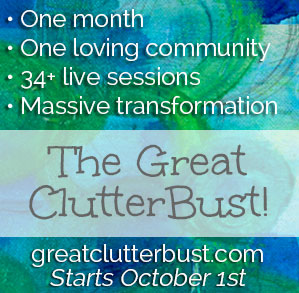
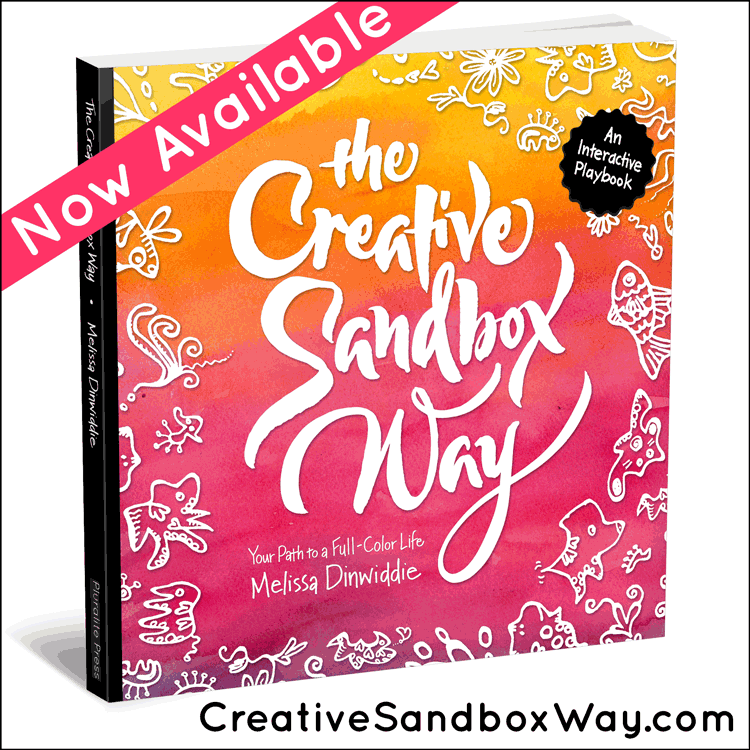
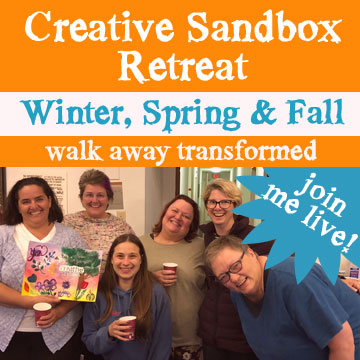
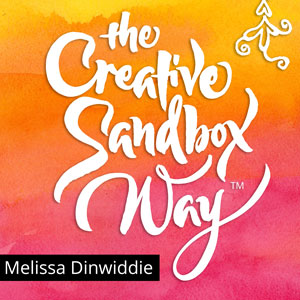

Leave a Reply